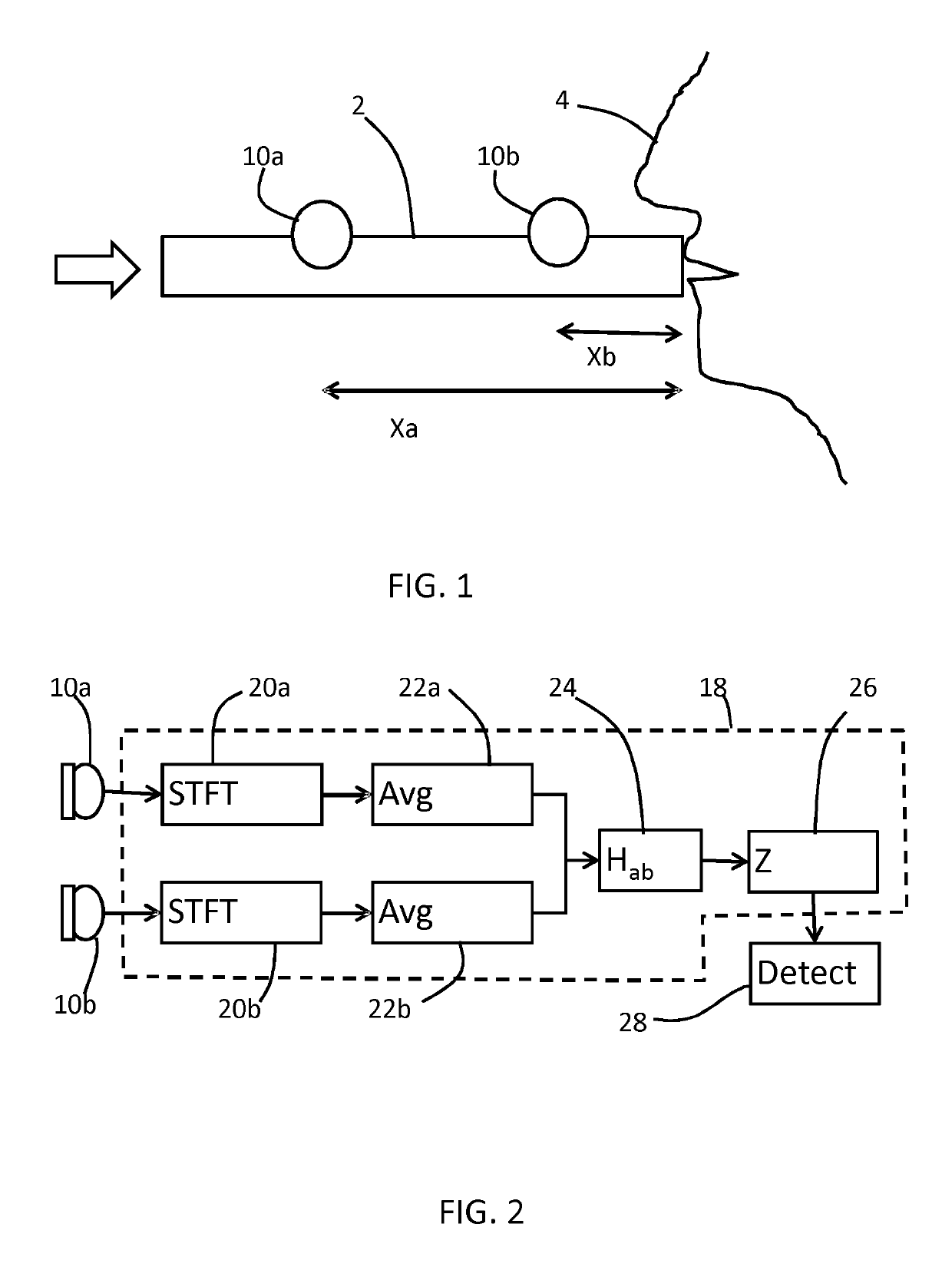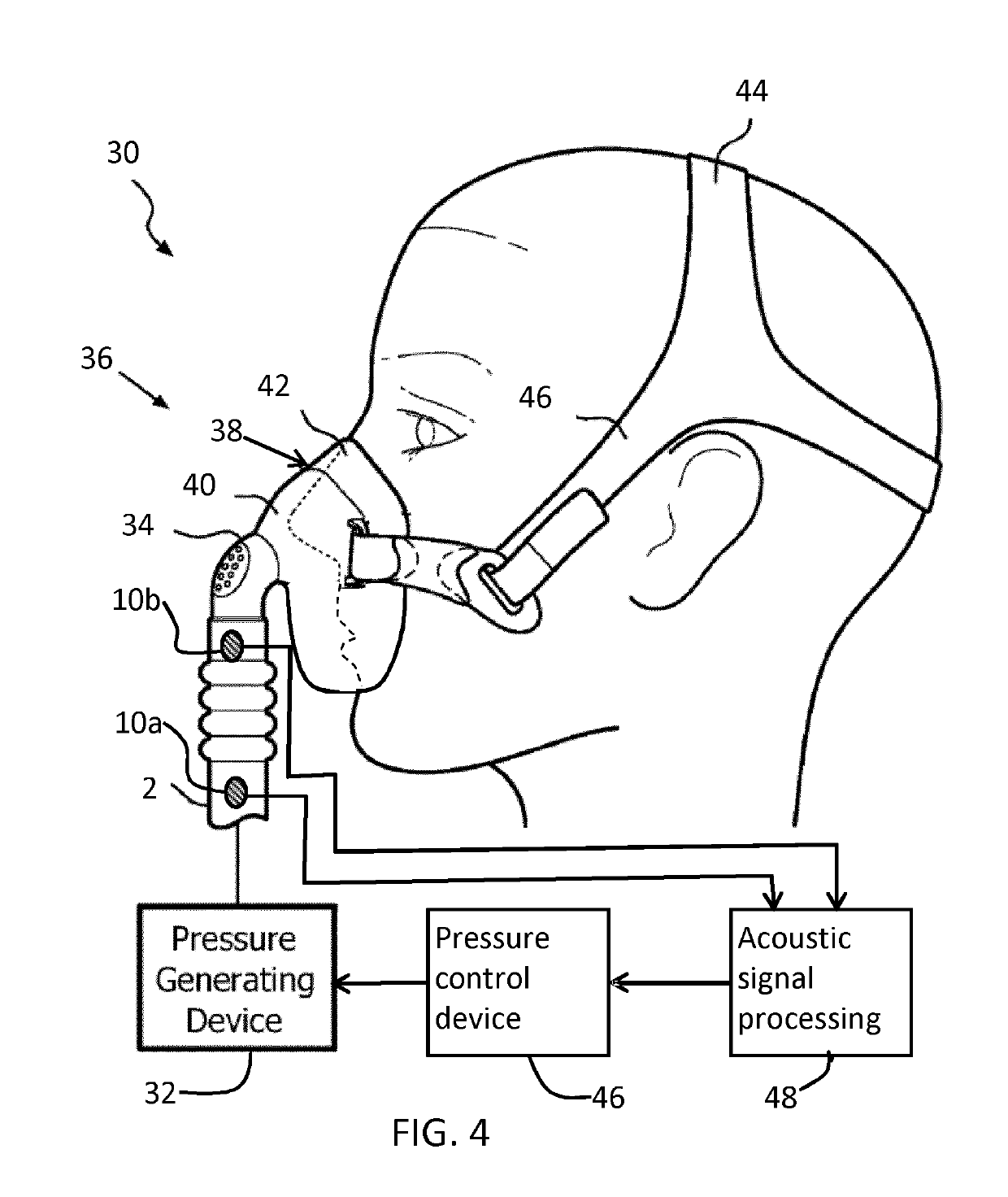System and method for analysis of the upper airway and a respiratory pressure support system
a technology of respiratory pressure support system and analysis system, which is applied in the field of upper airway analysis, can solve the problems of lowering the compliance of patients to use the system, change of resistance, and inability of existing pap systems to measure neither the respiration drive nor the airway resistance, so as to reduce the effect of obstruction
- Summary
- Abstract
- Description
- Claims
- Application Information
AI Technical Summary
Benefits of technology
Problems solved by technology
Method used
Image
Examples
Embodiment Construction
[0052]Embodiments provide a system for analysis of the upper airway in which at least two sensors are provided along a flow path leading to the mouth and / or nose of a user. A relation is derived between the two sensor signals, and this is interpreted to detect at least the presence of upper airway obstructions, and preferably also the location and / or extent of such obstructions.
[0053]Examples can be used solely as diagnostic tools and other examples can be used to assist in the control of a PAP system.
[0054]A first example will be described for diagnostic purposes.
[0055]FIG. 1 shows the general configuration.
[0056]This example makes use of a passageway 2 in the form of a tube which is provided with one end terminating at the mouth and / or nose of a user 4. The example shows the passageway leading to the user's mouth. The one end is sealed around the mouth (and / or nose) although this is not shown in FIG. 1.
[0057]A first acoustic sensor 10a is positioned at a first location along the p...
PUM
 Login to View More
Login to View More Abstract
Description
Claims
Application Information
 Login to View More
Login to View More - R&D
- Intellectual Property
- Life Sciences
- Materials
- Tech Scout
- Unparalleled Data Quality
- Higher Quality Content
- 60% Fewer Hallucinations
Browse by: Latest US Patents, China's latest patents, Technical Efficacy Thesaurus, Application Domain, Technology Topic, Popular Technical Reports.
© 2025 PatSnap. All rights reserved.Legal|Privacy policy|Modern Slavery Act Transparency Statement|Sitemap|About US| Contact US: help@patsnap.com



